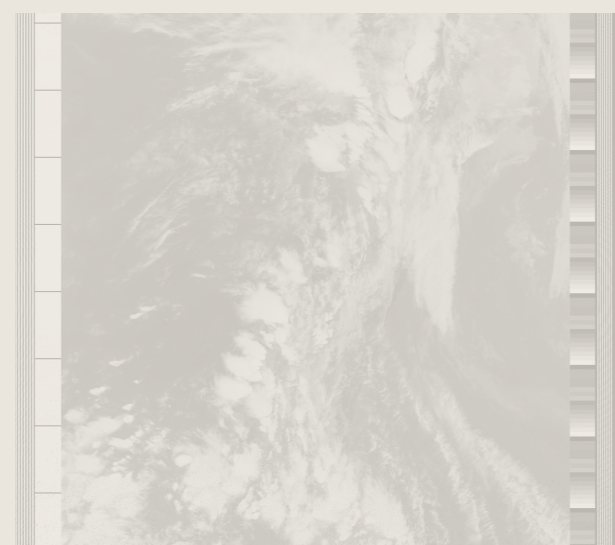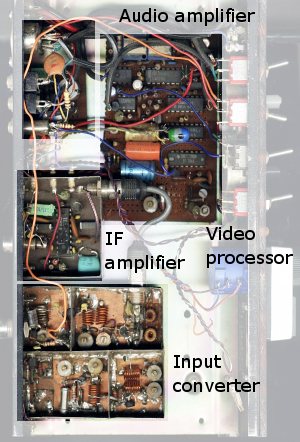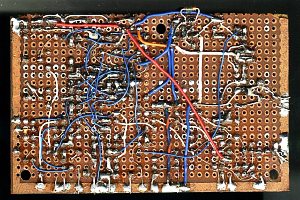

Language:
Español
Reception:
QFH Antenna
Preamplifier
Original version
Converter
TDA7000 IF amp
'New' receiver
Other information:
Links
Legend
Archive
Bibliography
Wallpapers
Where are we?


|
I built this receiver around 1982 or so... 'Home'
computers at the time were C-64's, some of those large boxes with a
lot of switches and CP/M machines. The receiver reflects this history:
Audio amplifier: Well, to be honest, this could be the part that changed the least after all those years. The amplifier is still in use with the new version, and is simple a TDA2002 5W amplifier which gives plenty of power. Video processor: The processing power of the computers available wasn't up to processing raw audio in those days. Lots of the work had to be done with real hardware. The video processor includes such items as a real PLL to lock on the audio subcarrier (2400 and 1800 Hz), a full-wave rectifier to convert the AM audio into a video signal, and a complex low-pass filter to clean that signal. Below is a picture of the cabling... IF amplifier: A bit rebellious at the time was to drop the standard 10.7 MHz IF, where filters could be bought commercially (not easily though!). I designed this IF using a TDA7000 complete FM receiver. As the 7000 doesn't do 137 MHz easily, I made its tune 12 to 14 MHz, and convert it to a recalculated IF at about 60 kHz to be filtered with the TDA's internal active filters. The IC's own VCO was used to tune that range using a simple potenciometer. Input converter: This converter takes the 137 MHz signal, amplifies it a bit, and the mixes it with a crystal oscillator to obtain de 12-14 MHz necessary for the IF. This converter worked so nicely that it survived the modifications and is still in use at the moment. |

|
The video processor's dark side. As can be seen by the different
colors and wire sizes, this circuit was modified frequently to
adapt it to the state-of-the-art...
I digitized the video with a Z-80 computer, and then showed the image on a monitor using a modified video game board (with a a MC6809 processor). I also modified the board's 'firmware' to have graphics primitives - kind of my proper VESA standard... |
| (c) John Coppens ON6JC/LW3HAZ |